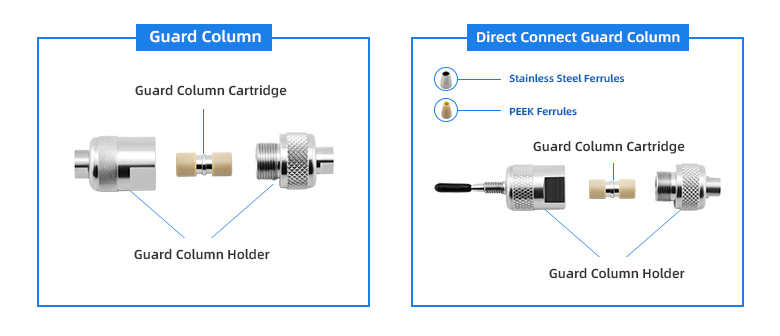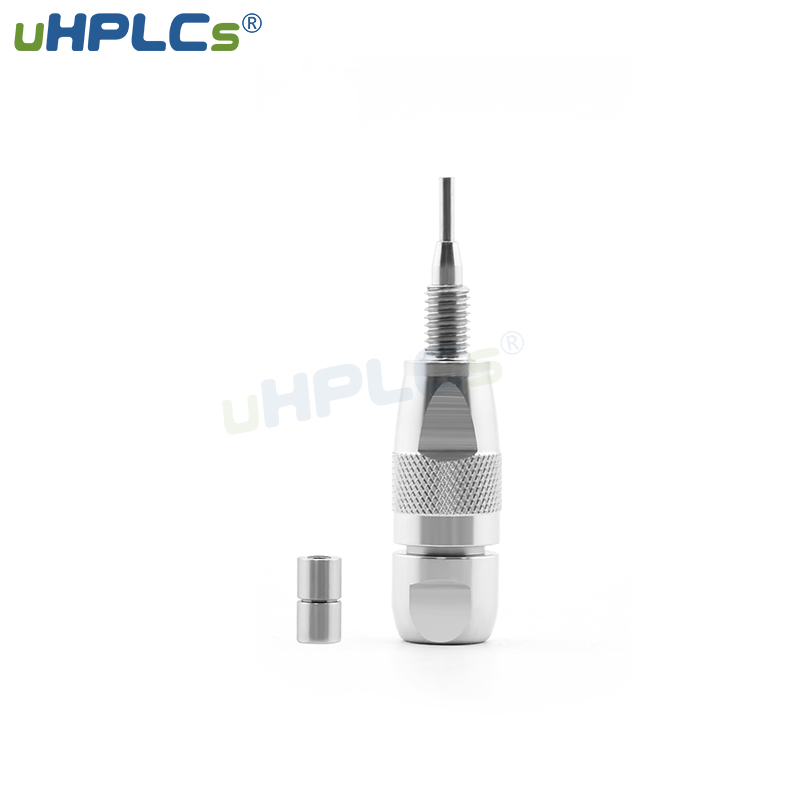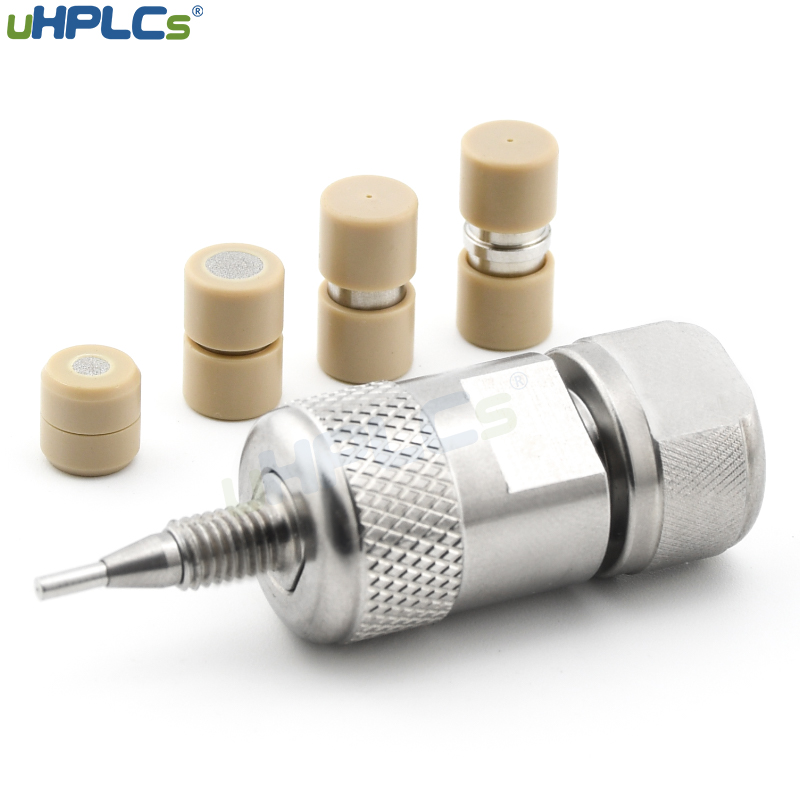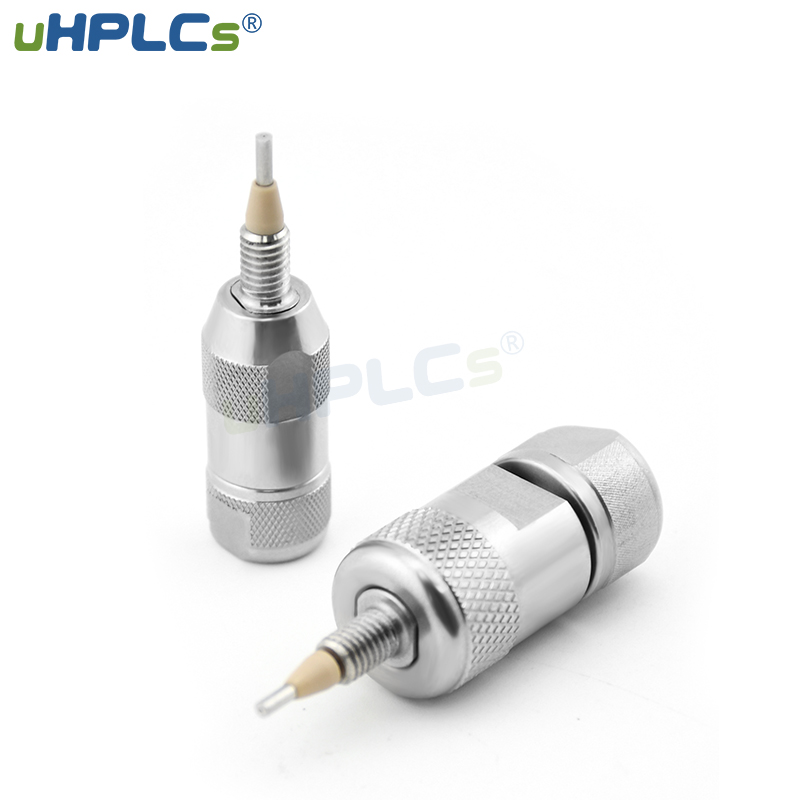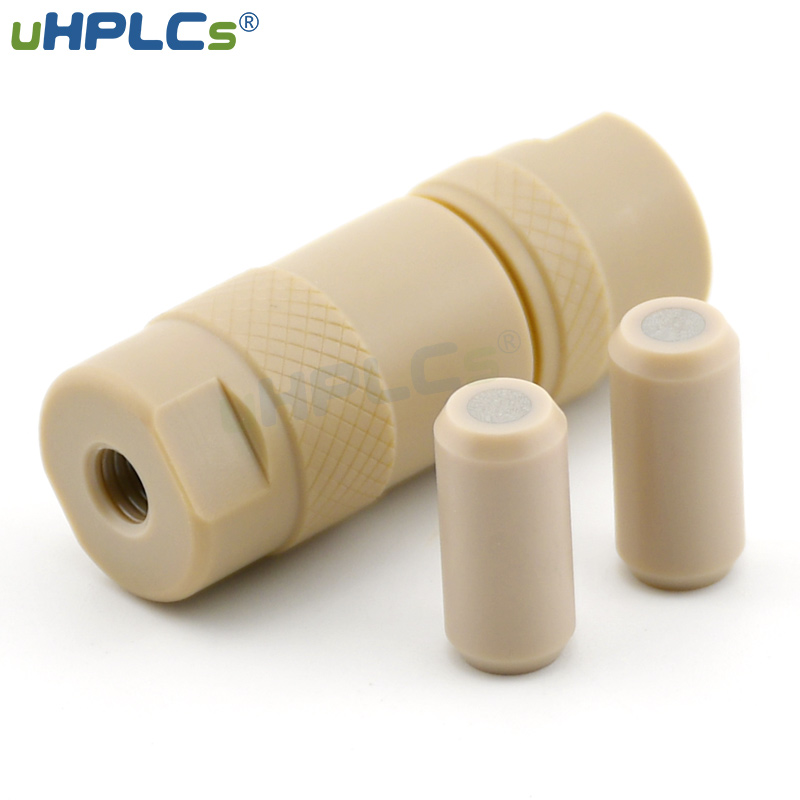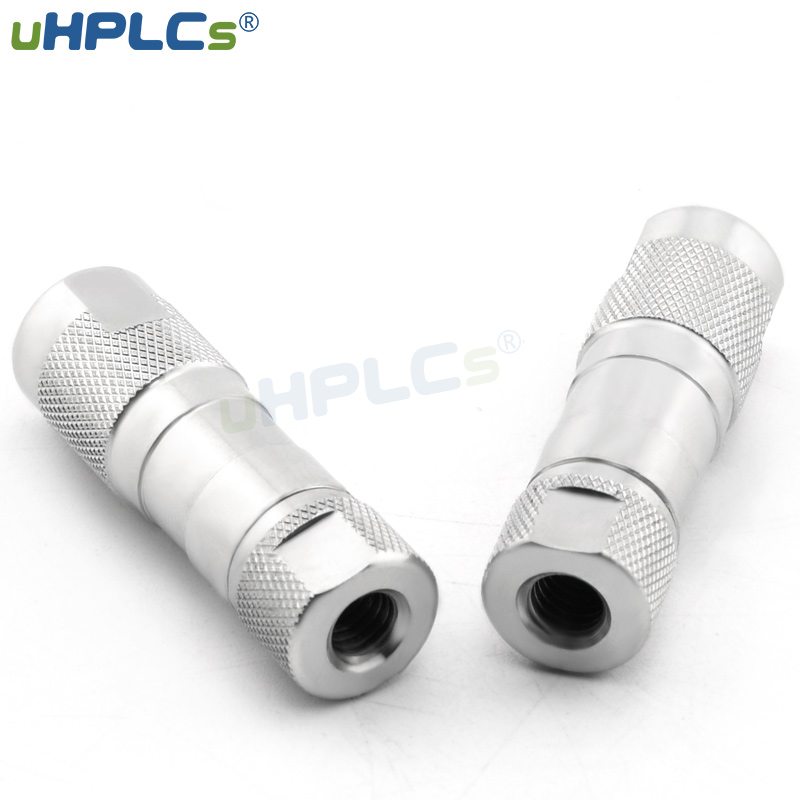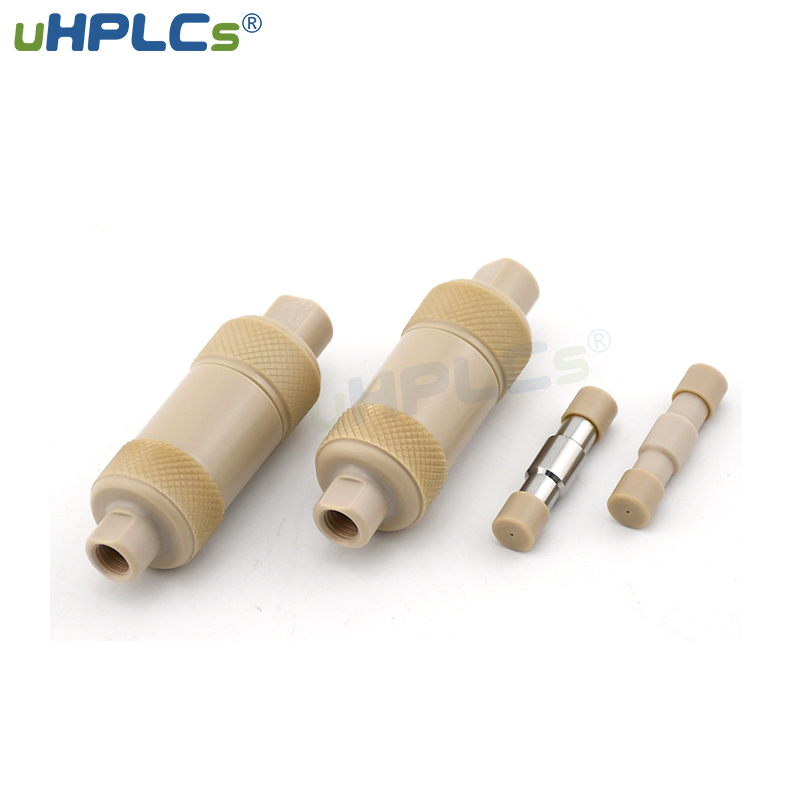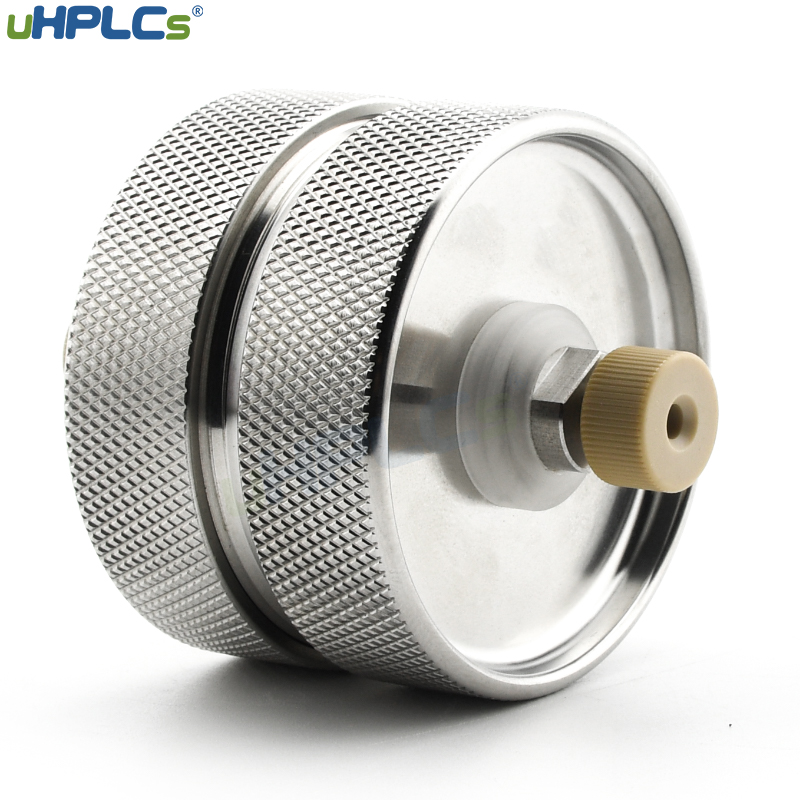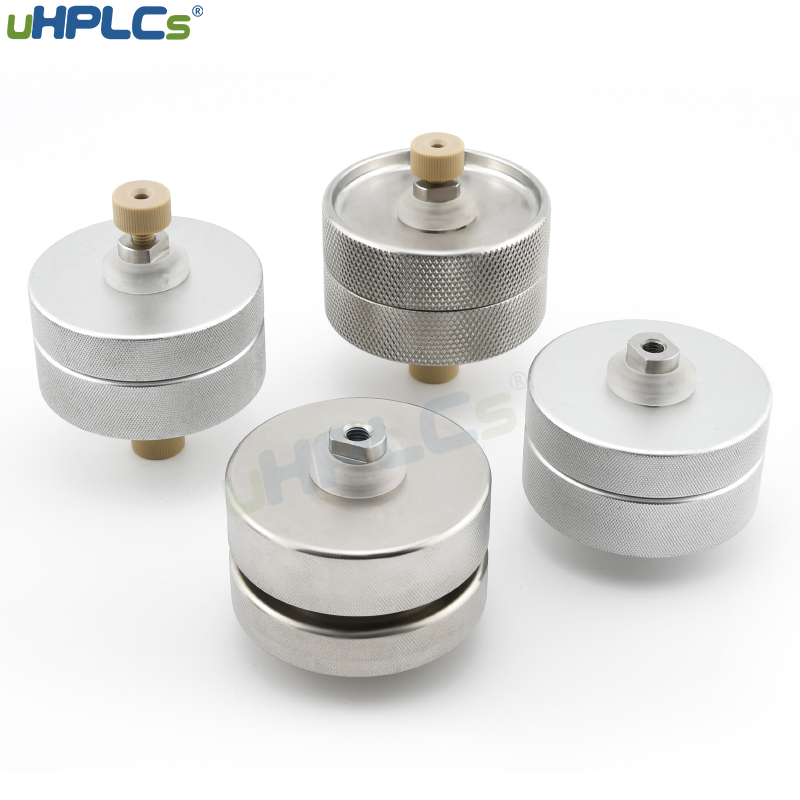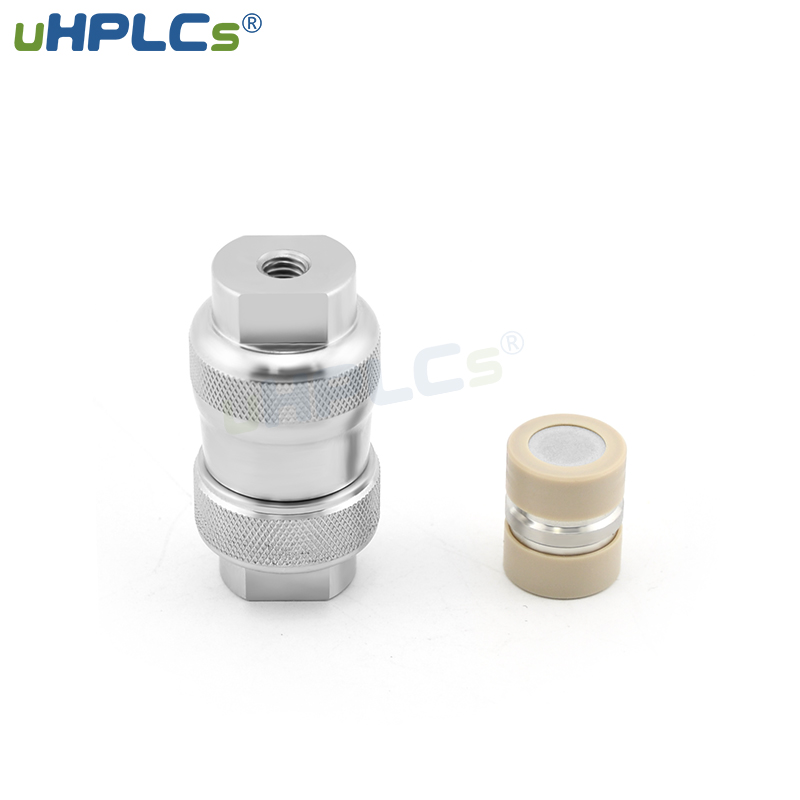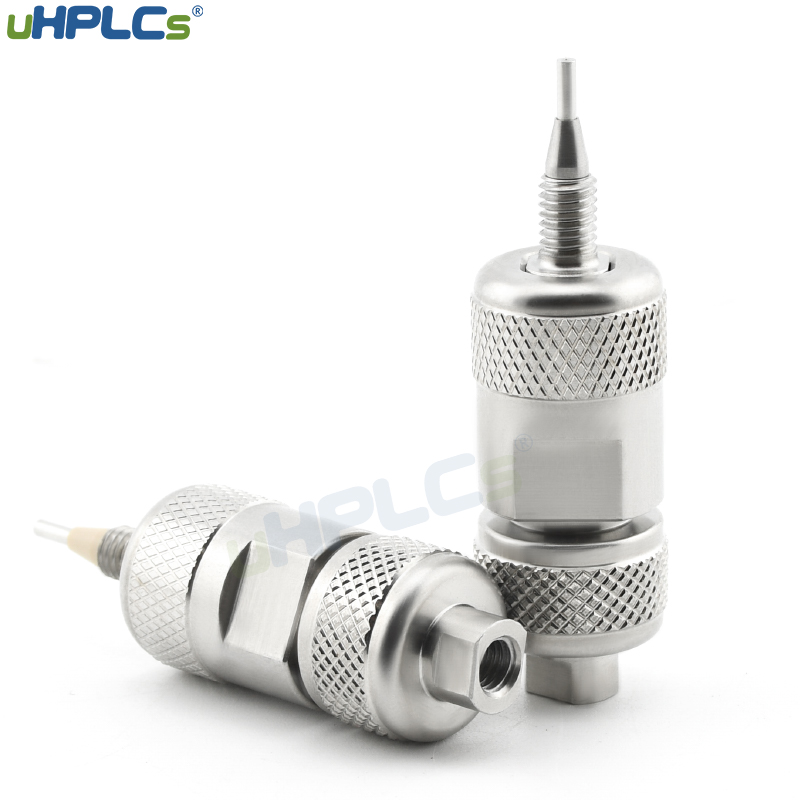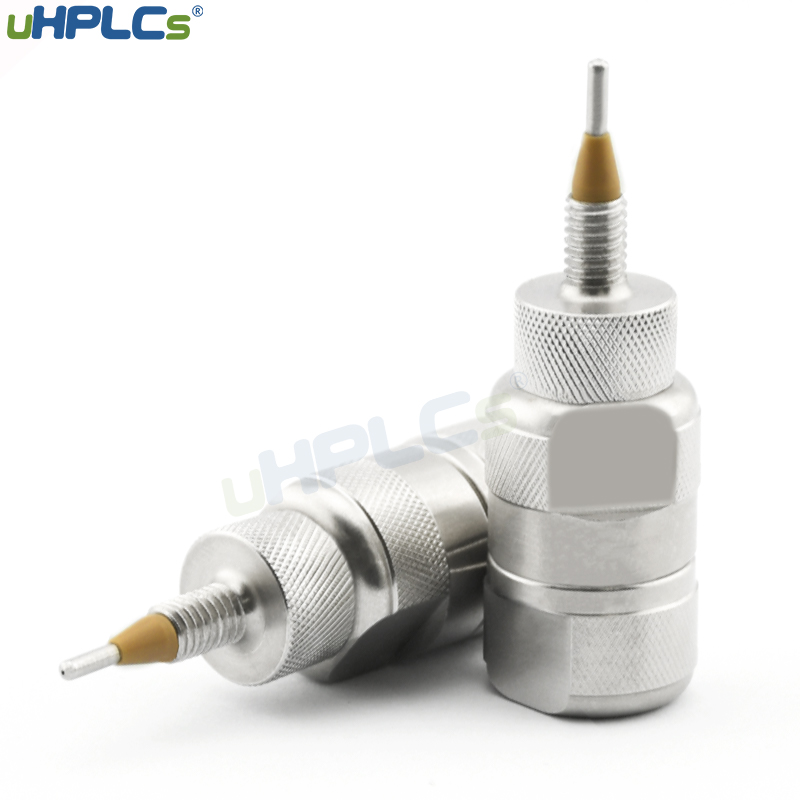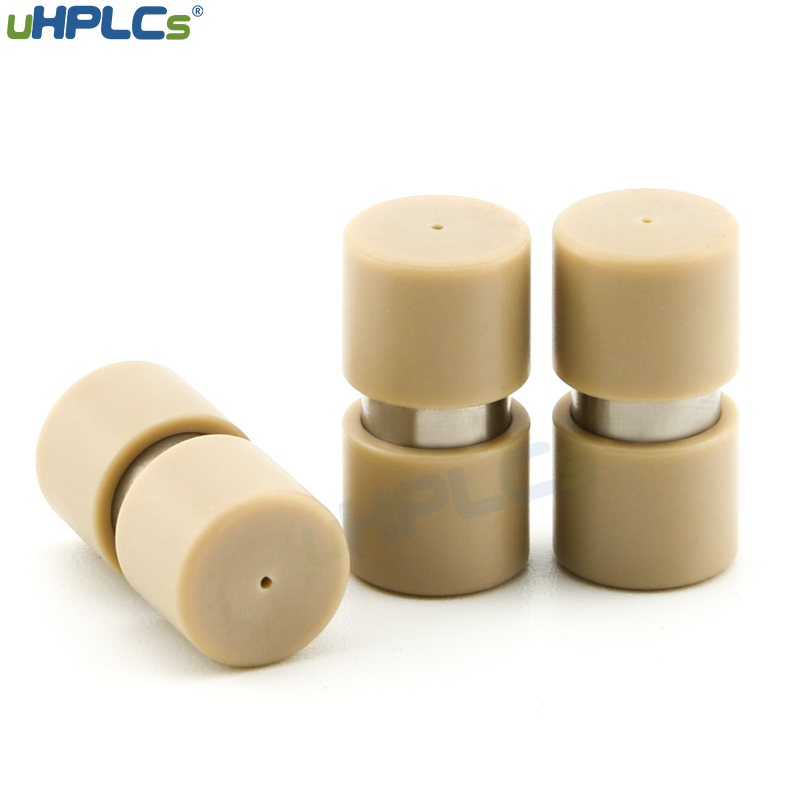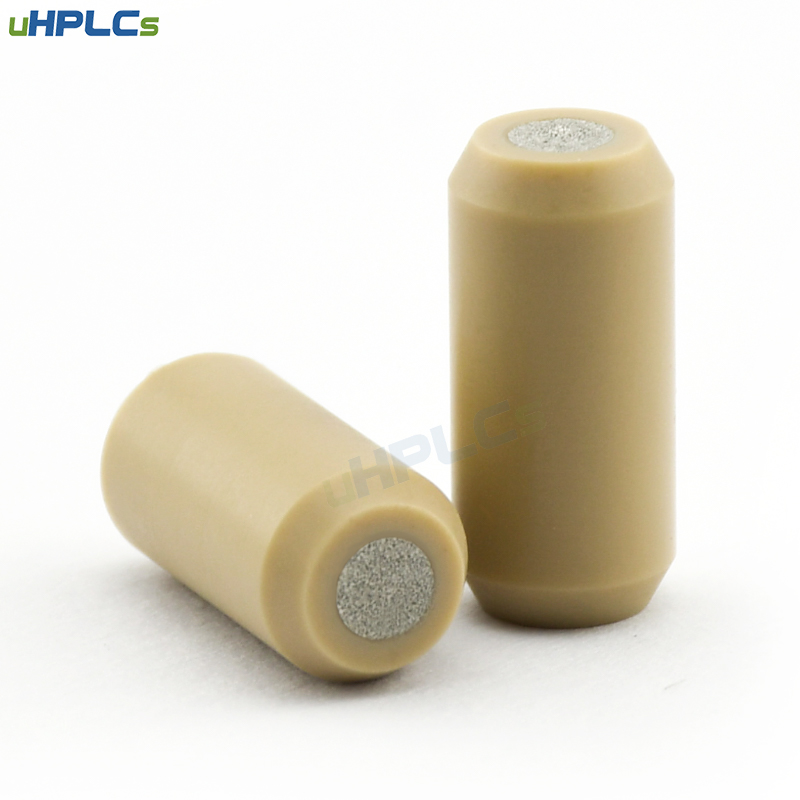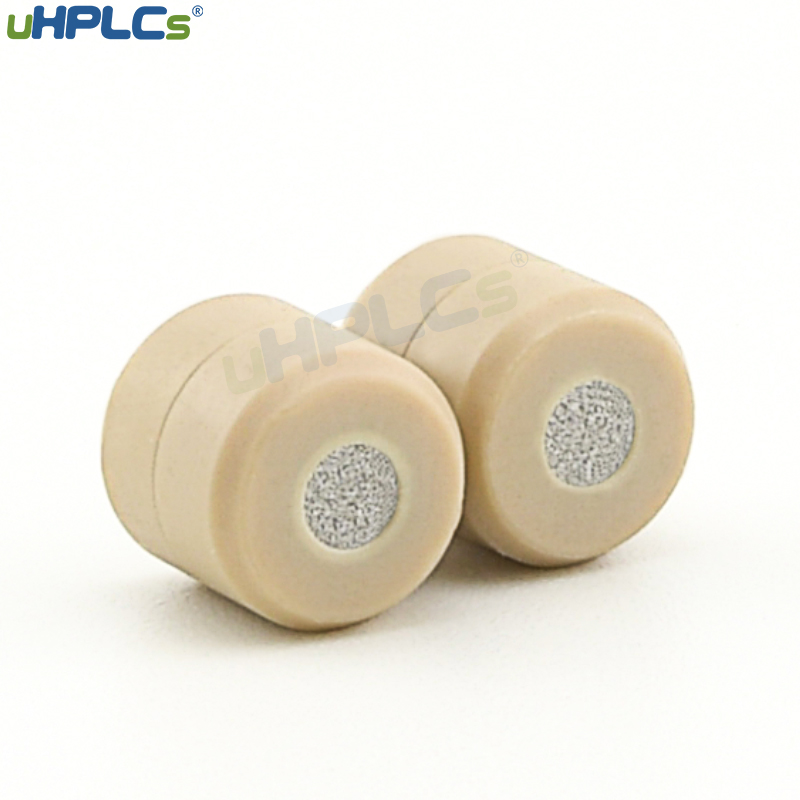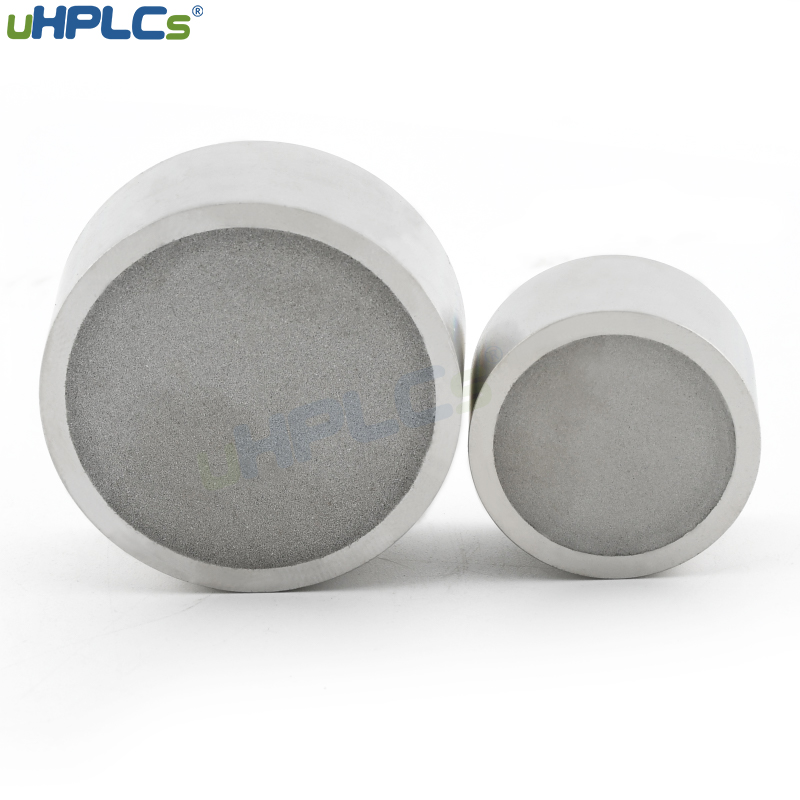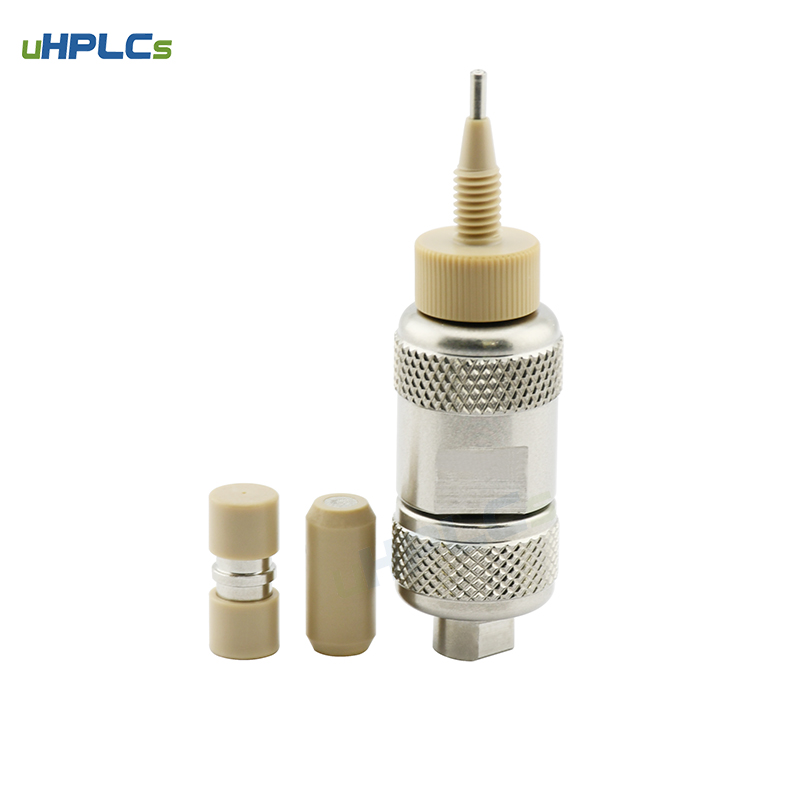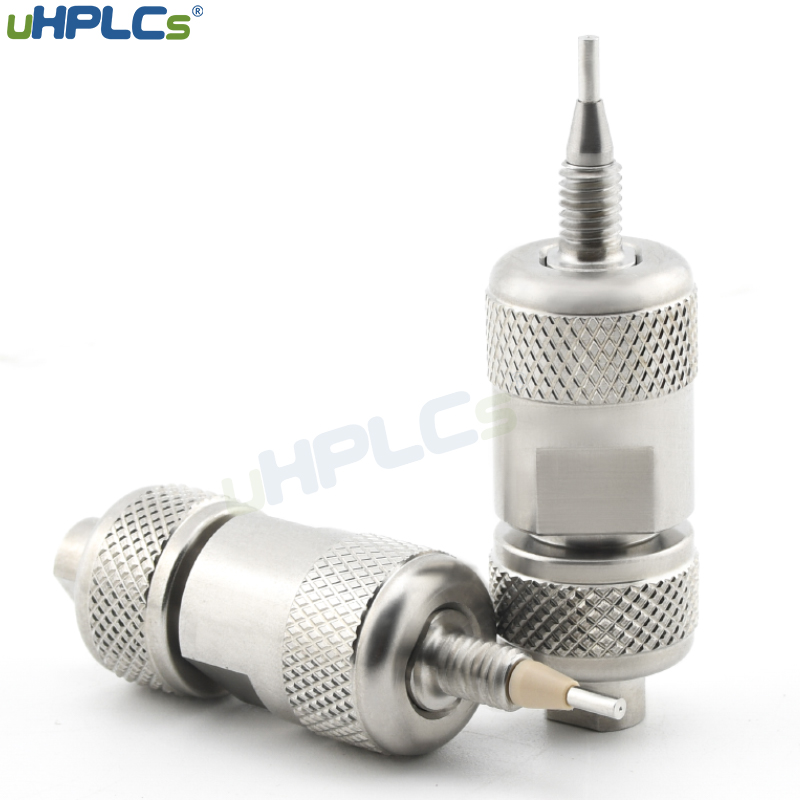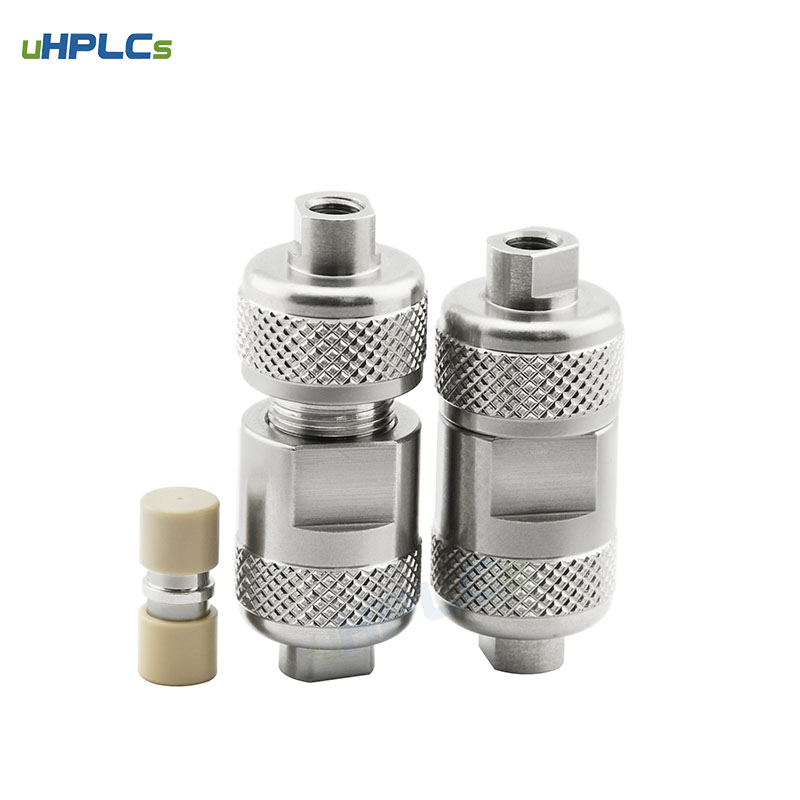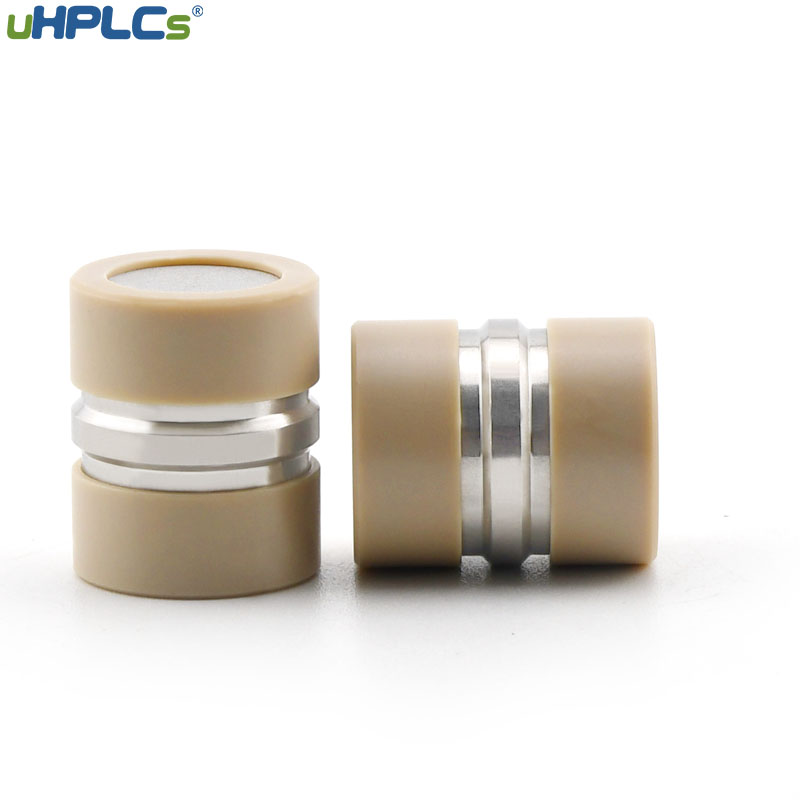HPLC Guard Column Manufacturer
What is a guard column, and why is it necessary?
A guard column is a small column installed between the sample injection port and the analytical column in chromatography. The guard column serves as a sacrificial column, meaning that it is intended to protect the analytical column from contamination and sample matrix effects.
The guard column is typically filled with the same stationary phase as the analytical column, which will help to retain any unwanted contaminants or matrix components that may interfere with the separation of the target analytes. Guard columns are available in a variety of sizes and materials, and they can be easily replaced or cleaned when they become saturated or fouled.
The use of a guard column is essential for maintaining the performance and longevity of the analytical column in chromatography. Without a guard column, contaminants in the sample matrix can accumulate on the analytical column over time, leading to increased baseline noise, reduced column efficiency, and ultimately, the need for more frequent column replacement. So you can know, By using a guard column, the analytical column is protected from these contaminants, and the cost and time associated with column replacement can be minimized.
Why Use HPLC Guard Column ?
After using the hplc guard column, especially when the sample is not very clean and there is a need to reconnect it after disassembly,
please pay attention to the connection direction when it is used. Otherwise, it is easy to cause the contamination of the column head
of the guard column to enter the column with the mobile phase, it will lead to contamination of the column head, and the guard column
will naturally fail to perform its protective function. The same applies to the use of copper HPLC columns.
The connection of the guard column is also very important. The shorter the connection line between the chromatographic column and
the guard column, the better, and the inner diameter of the connection tube should be as small as possible.
When to Replace the Guard Columns?
The guard columns should be replaced when one of the following conditions is met
a. The theoretical column number of the chromatographic column has decreased by more than 15%.
b. The pre-column pressure of the chromatographic column increases by more than 15%.
c. The resolution of the most difficult to separate substances decreases by more than 15%.
d. The number of sample injections exceeds 150.
e. The mobile phase passes through 1500 times the volume of the column.
So you can check and get the fast quotation of uHPLCs' guard columns HPLC , our engineers will supply you
with a good solution and price within 48-Hours.
Guard Columns or Guard Column Cartridges Replacement Procedure:
1. disconnect the liquid chromatography column from the guard column and replace the guard column (or column core)
2. Replace the guard column (or remove all tape from the guard column core, replace the core, and connect the guard column)
3. Rinse the replaced guard column with methanol for 30 minutes.
4. connect the HPLC column
Do The Pre-column and Guard Column Refer to the Same Component?
Do They Have the Same Construction, Principle, and Function?
The guard column is connected to the column after the injector and before the column. Its purpose is to protect the column, especially the column head, from being scrapped due to contamination.
The pre-column appears later. It is also to protect the column, but mainly to prevent the dissolution of the mobile phase to the column, especially the extreme pH damage. Its packing is consistent with the hplc column by being dissolved to saturate the mobile phase and no longer react with the hplc column, it is connected between the pump and the injector.
Precautions for the Use of Guard Columns:
1. When connecting the guard column and analytical column, the connecting pipeline should be as short as possible. The interface should be smoothly cut to minimize the dead volume and reduce the column spreading effect.
2. The commercially available guard column is generally not marked with the direction of liquid flow. uHPLCs provide the service of marked direction, which can avoid contamination of the analytical column by entrained impurities when used in the forward and reverse directions.
3. The direct connect guard column, column pressure rise or peak shape deterioration can not be connected to the analytical column for reverse cleaning. Cleaning solvent can refer to the analytical column cleaning solvent.
4. Guard cartridge replacement, pay attention to the core and column sleeve to determine whether there is a directional match, while not easy to screw too tight to prevent slippery wire.
5. The guard column or guard cartridge is generally not recommended for ultrasonic cleaning because it may impact the packing surface modification.
6. The same guard column with a different analytical column, each time before use, the guard column should be cleaned and mobile phase equilibrium guard column for some time, and then connected to the analytical column use.
How do I choose the right guard column and analytical column for my application?
Actually, Choosing the right guard column and analytical column for a particular chromatographic analysis is a complex process, because it requires you consider several factors, including the sample matrix, the analytes of interest, and the desired separation efficiency etc
First, When you to select a guard column, it is important to choose a column that is compatible with the stationary phase of the analytical column, as well as one that has a similar particle size and packing material.
The Second important factor you should care is account the expected matrix effects and the expected level of contamination from the sample. Different guard column configurations, such as guard cartridges or guard columns with replaceable frits, can also be selected based on the specific application needs.
The Third, The selection of an analytical column also requires us to consider the sample matrix and the analytic of interest. Factors such as sample complexity, analytic polarity, and temperature requirements can all influence the choice of analytical column. It is important to choose a stationary phase that is appropriate for the chemical properties of the analytic and to select a particle size that balances the need for separation efficiency with the need for analysis speed.
How do I maintain and replace a C18 guard column?
Proper maintenance and replacement of the C18 guard column are essential for maintaining the performance and longevity of the analytical column for each experimenter. Because the guard column should be inspected and replaced or cleaned regularly to prevent contamination from building up on the analytical column. But the frequency of replacement or cleaning will depend on the sample matrix, the number of samples analyzed, and the column usage conditions.
To replace a C18 guard column, some steps you'd better to check and follow:
1. First, Disconnect the guard column from the analytical column and dispose of it properly.
2. Second, Before Installation a new guard column, making sure to use the appropriate fittings and column orientation.
Flush the guard column with the mobile phase to remove any air pockets and allow it to equilibrate before beginning the analysis.
To clean a C18 guard column, the following steps can be followed:
3. Disconnect the guard column from the analytical column.
Flush the guard column with a suitable solvent, such as methanol or acetonitrile, to remove any contaminants.
Flush the guard column with the mobile phase to remove any residual solvent.
Reconnect the guard column to the analytical column and allow it to equilibrate before beginning the analysis.
Contact Us
So still have any questions for our HPLC Guard Column ?
You are welcome to send email by sales@uhplcslab.com or
Send us Inquiry if interested for our HPLC Guard Column by follow form



